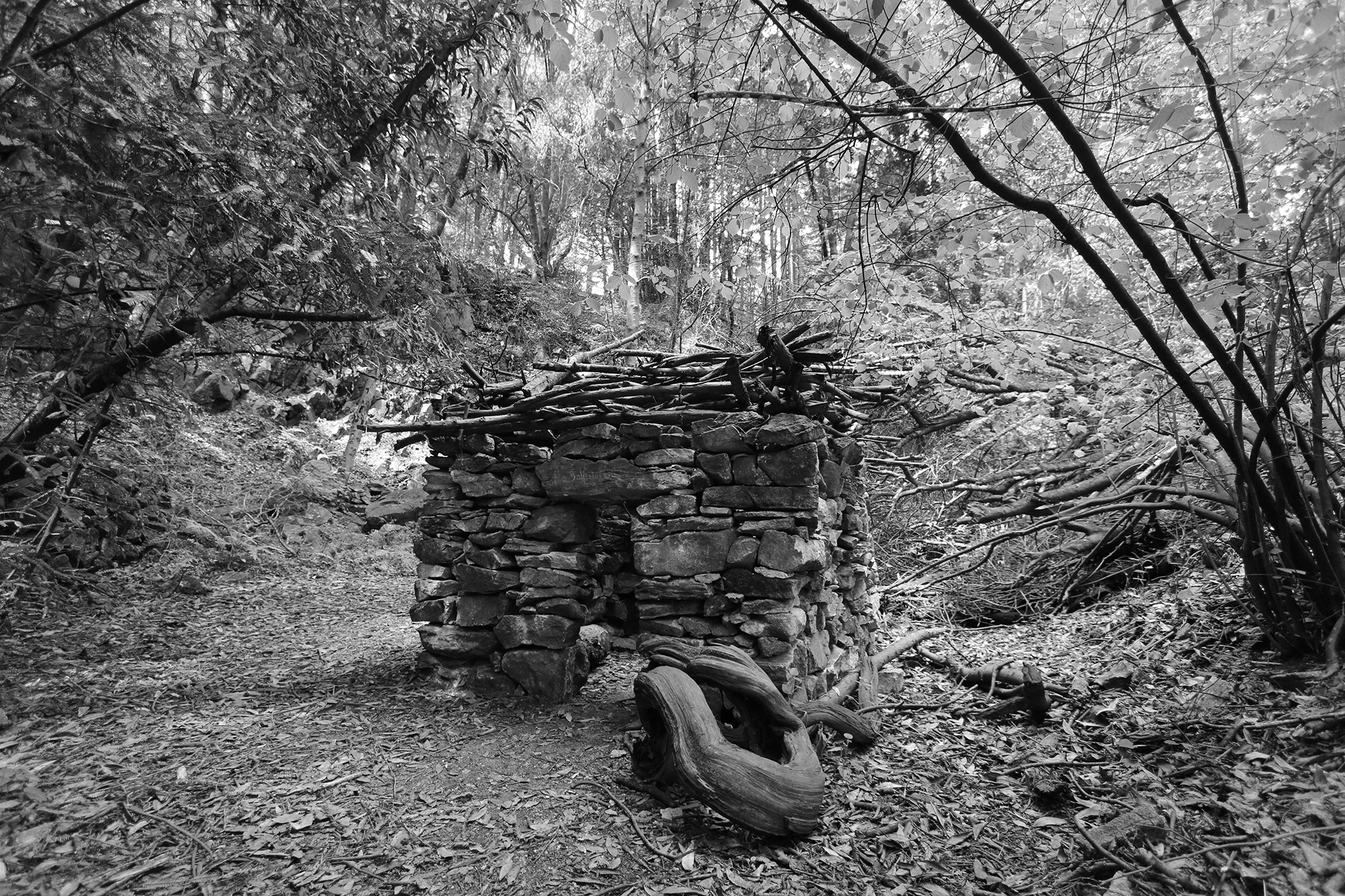The purpose of shelter is usually protection from some kind of bad weather.
Rain, snow, heavy winds, heat—things sometimes called “the elements”: things we’re supposed to need shelter from. And more broadly, changes in weather: shelter from the daily arrival of nighttime, from the seasonal arrival of hot or cold, dry or wet, and from climate, the weather we come to expect in different places over longer periods of time.
Shelters also offers protection from other elements of our environment, mainly in the form of other creatures considered threatening or unwanted, whether dangerous predators or bothersome insects, known enemies or unknown strangers. Protection from coming into contact with them, or being discovered by them.
In these formulations, the environment is cast as something to be protected from. And yet, shelters are also built from the environment—from parts of plants and animals, or from sand and soil, shaped or treated with fire. Shelters also create their own interior environment, and a landscape designed around interconnected shelters becomes a “built” environment.
In this way, there is a subtle danger in shelters. They create an inside and an outside—a conceptual divide that is constantly reinforced by physical experience. In seeking protection from hostile environmental conditions, we create an environmental distinction that can itself become insidious. The dwelling comes to seem like a different place from the land, city from country, built from wild. Infrastructures built in and around shelters, designed to hide flows of air, waste, and other stubbornly pervasive materials, help us forget what ecology and spirituality (part of what we mean by “Magic”) would constantly remind us: that inside and outside are both, ultimately, one and the same.
I squash the flies that buzz into my home, as if they should have known better. I open the cupboards in ways dictated by how they were made. As it’s often said: “We shape our buildings; thereafter they shape us.” We may also become sheltered from awareness of the connections needed to survive. Shelter, after all, is often considered a base for other human needs and “higher” motivations. But collective practices of sheltering can erode a much wider base: they can shape the environment itself, causing worse weather to protect ourselves from.
In a time of increasingly bad weather, how might we move from a culture of hostility and protection to one of cohabitation and sharing? Sheltering with, rather than sheltering from? What can we learn from the sheltering practices of other people, across time and space, and other species? Our common shelter, the roof, so to speak, over all our heads, is a fragile atmosphere regulating solar radiation. If we use Egyptian writer Naguib Mahfouz’s definition of home—“Home is not where you are born; home is where all your attempts to escape cease”—then how might we learn to find shelter together, and to be at home, with everything else under the sun?
“Home is not where you are born; home is where all your attempts to escape cease”
Naguib Mahfouz
